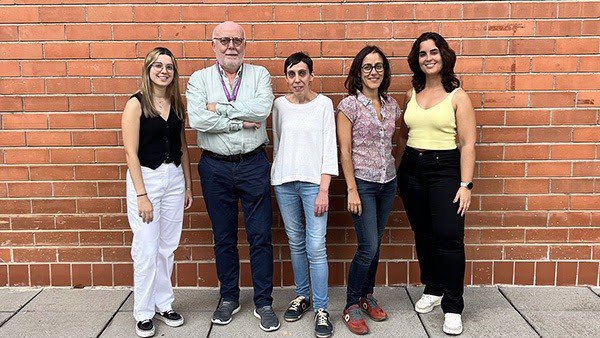They are developing a drug that can act simultaneously on three different therapeutic targets.


The study, conducted by researchers at the Institute of Biomedicine of the University of Barcelona (IBUB), has developed a new pharmacological tool capable of simultaneously delivering three oligonucleotide-based drugs, each acting against different therapeutic targets within the cell.
The work, published in the journal Bioorganic Chemistry, provides a proof of concept for this innovative triple-action compound, which was successfully applied to breast cancer cells. According to the researchers, it is a therapy with “high potential for treating complex diseases such as cancer or diabetes.”
The work was led by Professor Montserrat Terrazas from the Department of Inorganic and Organic Chemistry of the Faculty of Chemistry (UB) and Professor Sandra Pérez-Torras from the Department of Biochemistry and Molecular Biomedicine of the Faculty of Biology (UB). ) and researcher at the Network Biomedical Research Center for Liver and Digestive Diseases (CIBEREHD) and the Sant Joan de Déu Scientific Research Institute (IRSJD). Professor Marsal Pastor Anglada and postdoctoral fellow Aida Mata-Ventosa and doctoral student Ariadna Vila-Planas also participated in the work.
Multifactorial or complex pathologies, such as cancer, result from the combined action of multiple factors in the body that activate different tumor signaling pathways. This diversity of signals makes it easier for cancer cells to resist certain treatments because when a drug blocks a primary signaling pathway, secondary tumor signaling pathways are activated.
“Combinations of small molecule drugs are often prescribed to address these problems, but many of the currently approved combination therapies have various limitations, such as difficulty interacting with target proteins with poorly defined binding patterns or toxicity issues due to interactions between drugs of different chemical natures,” – the researchers explained.
Faced with this problem, the UB team developed a pharmacological tool that administers three antisense oligonucleotide (ASO) drugs. These are short chains of nucleic acids designed to bind to specific messenger RNAs and thus block the key function of this molecule in protein synthesis in cells.
This triple drug compound was successfully applied to breast cancer cells to inhibit the expression of three specific proteins (Akt, Hsp27 and HER2) that contribute to poor breast cancer prognosis and drug resistance. The results of a new study show that the toxicity of this innovative therapy to cancer cells is superior to a combination of three ASO drugs administered independently. “In addition, the specificity of the selected targets allows us to attack tumor cells that have these changes without affecting non-tumor cells,” the researchers added.
Activation of the new combination drug inside the cell is mediated by the enzyme RNase H, which is naturally found in the cytoplasm of the cell. “This enzyme recognizes the central part of the construct (an RNA-DNA hybrid) and cuts its RNA component, which acts as a link between the three drugs. As a result, the three ASO drugs are released simultaneously and may play a role. braking functions,” they detailed.
The proof of concept was performed on a specific type of breast cancer cell, but experts note that the new tool could be used in the future to “administer multiple combinations of ASOs that can target multiple combinations of therapeutic targets.” “Not only for various types of cancer, but also for other complex diseases such as diabetes,” they concluded.